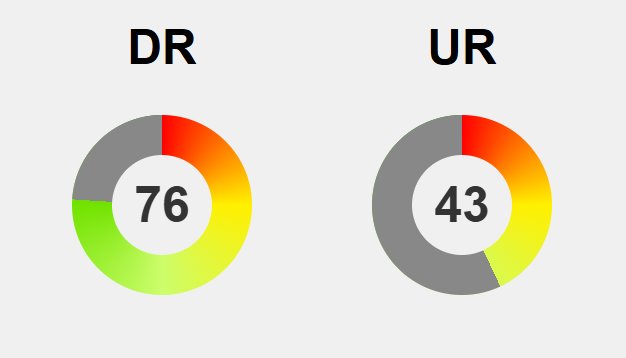Could a single genetic mutation 10,000 years ago in Europe have given rise to blue eyes, or does our eye color reveal a deeper story of human adaptation and migration? This fascinating exploration delves into how the OCA2 gene, responsible for melanin production, played a pivotal role in shaping human appearance. A tiny mutation in this gene reduced melanin in the iris, creating the striking blue eyes we see today—an evolutionary twist born in a small northern European population. But the story doesn’t end there; eye color results from a complex interplay of multiple genes and environmental factors that have evolved over millennia. These variations reflect our ancestors’ journeys, environmental pressures, and chance events, transforming a simple trait into a vivid symbol of human diversity. As we uncover the origins of eye color, we gain insight into our shared history, resilience, and the intricate dance of genetics and environment that continues to shape who we are.
Unveiling the Vibrant Spectrum of Human Eye Colors and Their Genetic Roots
Human eye color is one of those features that immediately grabs your attention. It’s a striking trait that makes each person’s appearance uniquely their own. When you look around, the spectrum of eye colors—from deep browns to bright blues and vibrant greens—stands out as a vivid testament to human diversity. But beyond aesthetics, eye color offers a fascinating glimpse into our genetic makeup and evolutionary past.
The variety we see isn’t just happenstance; it’s rooted in complex biological processes. At the core is melanin, the pigment responsible for eye, skin, and hair color. The amount and type of melanin in the iris determine whether someone has dark, hazel, green, or blue eyes. This pigmentation results from a combination of genetic instructions that have been passed down through generations, shaped by both natural selection and chance mutations.
Understanding why eye colors differ involves looking at specific genes, especially OCA2, which plays a pivotal role in regulating melanin production. Variations in this gene can lead to significant differences in eye hue. A mutation that reduces melanin in the iris, for example, creates the lighter blue shades that many recognize today. This simple genetic change has had a profound impact on human appearance, illustrating how small shifts in our DNA can produce striking physical traits.
The story of eye color is also a story of migration and adaptation. As ancient populations moved across different environments, certain traits became more common based on local conditions. For instance, lighter eye colors like blue and green are especially prevalent in northern Europe, where lower sunlight levels may have favored reduced melanin. These patterns reveal how our ancestors’ environments influenced genetic traits, shaping the diversity we see today.
While genetics provide the blueprint, environmental factors can subtly influence eye color as well. Exposure to sunlight during early development can impact melanin levels, sometimes causing slight changes over time. Age and health also play roles, with some people noticing their eye color shifting gradually as they grow older. All these elements combine to create a complex, layered portrait of human eye color.
The diversity of eye colors reflects more than just individual variation; it symbolizes our shared history and adaptation. Each shade tells a story of migration, survival, and chance mutations that have traveled through millennia. Our eyes are living records of human evolution, embodying the intricate dance of genes and environment that has crafted our physical identity.
In essence, eye color is a vibrant reminder of our biological complexity. It’s a window into the myriad forces—genetic, environmental, and historical—that shape who we are. Recognizing this deep connection helps us appreciate the rich tapestry of human variation and the ongoing story of our species’ journey through time.
Tracing the Origin of Blue Eyes: A Single Mutation’s Remarkable Impact
The story of blue eyes begins with a single, pivotal genetic mutation in the OCA2 gene, which plays a central role in controlling melanin production in the iris. This mutation is believed to have first appeared roughly 6,000 to 10,000 years ago in a small population somewhere in northern Europe. The change reduces the activity of the OCA2 gene, leading to less melanin in the iris and resulting in the lighter blue coloration we recognize today. This tiny genetic shift had an outsized impact, creating a new physical trait that would spread across generations and populations.
Scientists trace the origins of this mutation to a relatively isolated group in northern Europe, where cooler climates and lower sunlight levels may have influenced its emergence. Reduced melanin in the iris might have conferred certain advantages in these environments, such as improved absorption of sunlight to support vitamin D synthesis. As populations migrated and mingled over time, this trait dispersed across northern and eastern Europe, gradually becoming a defining feature of many communities. The mutation’s spread exemplifies how a single genetic event can dramatically influence physical appearance across vast regions.
Genetic studies, especially those analyzing ancient DNA, support the idea that blue eyes originated from a single mutation event. Researchers examining skeletal remains dating back thousands of years have identified the same genetic variants associated with blue eyes in early European populations. This evidence suggests that the mutation did not develop gradually through multiple steps but appeared suddenly in one individual, then proliferated through population growth and migration. Such findings challenge the notion that complex traits like eye color evolved solely through natural selection, highlighting the role of chance and genetic drift.
The effect of this mutation on eye color hinges on its impact on melanin synthesis: less melanin means a lighter iris that reflects more light, giving it the characteristic blue hue. This change wasn’t just a cosmetic shift; it illustrates how small genetic modifications can have broad, lasting effects on human appearance. The widespread presence of blue eyes today in northern Europe traces back directly to that initial mutation, demonstrating how a single genetic tweak can ripple through generations to shape a population’s visual identity.
The dissemination of the blue-eye trait was likely driven by genetic drift and founder effects, especially within small, isolated groups. As these groups migrated and expanded, the mutation gained momentum, becoming prevalent in specific regions. Today, blue eyes are most common in countries across northern and eastern Europe, with some populations showing rates as high as 80%. This distribution underscores how chance, migration, and environmental factors work together over thousands of years to influence the tapestry of human appearance, ultimately shaping one of our most distinctive and admired traits.
Decoding the Genetic and Environmental Tapestry Behind Eye Color Diversity
Human eye color isn’t determined by a single gene; it results from a complex web of genetic and environmental factors interacting over generations. While genes like OCA2 and HERC2 are major players in controlling melanin levels, they don’t tell the full story. Numerous other genes subtly influence variations in hue, brightness, and iris patterns, creating a rich tapestry of shades even among people with similar backgrounds. This layered genetic architecture means that two individuals can have quite different eye colors despite sharing many genes, thanks to the small differences working together in intricate ways.
Environmental influences, though more subtle, also leave their mark on eye color. Exposure to sunlight during early development can affect how genes related to pigmentation are expressed, sometimes causing slight shifts in hue over time. UV radiation can influence melanin production, leading to minor changes in brightness or color intensity. Additionally, age plays a role—many people notice their eyes becoming lighter or darker as they grow older, reflecting ongoing biological shifts in pigmentation. These environmental factors add nuance, making eye color a dynamic trait rather than a fixed feature.
The distribution of specific genes varies across populations, further complicating the picture. While the mutation in OCA2 explains the emergence of blue eyes, other genetic variants contribute to the full spectrum—hazel, green, or deep brown. Variations in how melanin is distributed within different layers of the iris, influenced by multiple genes, create patterns like rings or flecks, adding individual uniqueness. This mosaic of genetic influences results in a broad diversity of eye colors, highlighting how multiple factors work together to shape our appearance.
Scientists continue to investigate whether blue eyes arose from a single mutation or multiple genetic pathways. The prevailing view supports a single mutation event in early Europeans, but some evidence hints at additional minor genetic changes playing a role. This ongoing research emphasizes that traits like eye color are rarely the product of one gene; instead, they emerge from a complex interplay of many genetic influences and environmental factors accumulated over millennia.
Understanding this complexity deepens our appreciation for human diversity. Eye color isn’t just superficial; it’s a reflection of our genetic history and adaptation to different environments. The shades we see are the result of countless subtle influences—genes, environment, migration—woven into the fabric of our biology. Recognizing this interconnectedness reminds us that our physical traits are part of a broader story of evolution, resilience, and shared humanity.
In this way, eye color exemplifies the intricate dance of genetics and environment shaping who we are. It underscores that our appearances are more than surface features—they’re living records of our evolutionary journey. Each variation, from deep brown to striking blue or green, tells a story of adaptation, chance, and migration. This layered complexity enriches our understanding of human identity and celebrates the remarkable diversity that defines us all.
This ongoing research not only sheds light on our evolutionary past but also has practical implications for fields like forensic science and personalized medicine. For those interested in exploring more about the genetics of eye color, discovering how these factors influence individual traits, you can learn more at Genetics of Eye Color.
Beyond Appearance: Eye Color’s Role in Humanity’s Biological and Cultural Narratives
Understanding the genetics of eye color extends beyond explaining physical differences; it influences how we see ourselves and others in a broader human context. By deciphering the genetic pathways behind traits like blue eyes, scientists can better understand the biological foundations of pigmentation-related health conditions, paving the way for personalized medicine. Recognizing the genetic basis of eye color reveals connections between appearance and underlying health, opening doors to tailored treatments for certain eye or skin conditions linked to pigmentation genes.
Moreover, eye color serves as a powerful marker of human migration and adaptation. The prevalence of lighter shades such as blue and green in northern Europe reflects historic movements and environmental pressures faced by ancestors. These patterns help us reconstruct migration routes, showing how populations responded to changing climates and sunlight levels over thousands of years. Such insights deepen our appreciation of human resilience and the dynamic nature of our evolution.
Culturally, eye color influences perceptions of beauty and identity. Media often elevates certain shades as more attractive, shaping societal standards and stereotypes. Recognizing the genetic complexity behind these traits challenges superficial judgments and promotes a more inclusive understanding of beauty. Appreciating the diversity of eye colors underscores that physical traits are just one part of a rich human tapestry, rooted in our shared genetic history.
Eye color variation also highlights how biology and environment intertwine. For example, exposure to sunlight during critical developmental periods can subtly alter pigmentation, demonstrating that our appearance continues to evolve in response to external factors. This dynamic aspect underscores the importance of understanding that physical traits are not static but shaped by ongoing biological processes influenced by our surroundings.
In the realm of education and societal attitudes, understanding the genetic roots of eye color helps dismantle stereotypes and superficial judgments. When people see eye color as a complex trait shaped by countless factors, it fosters respect for individual differences and emphasizes our common heritage. Such awareness encourages embracing diversity, moving beyond surface features to recognize the intricate story each person’s appearance tells.
Finally, advances in genetic research raise important ethical questions about how we perceive and treat physical traits. As we uncover more about the genetic underpinnings of eye color, discussions about beauty standards, identity, and genetic privacy become increasingly relevant. Recognizing the deep biological roots of eye color invites us to reflect on societal values and promotes a respectful, informed approach to human diversity, rooted in understanding rather than superficial judgment.
The Deep Story of Human Eyes: Evolution, Migration, and the Beauty of Diversity
Eye color might seem like a simple feature, but it carries a profound story about human history and evolution. The emergence of blue eyes from a single mutation in Europe thousands of years ago shows how tiny genetic shifts can shape our appearance in lasting ways. This mutation, which reduced melanin in the iris, created a new trait that spread across populations, influencing how many of us look today. Its journey from a single individual to widespread prevalence highlights the power of chance and migration in shaping human diversity.
What makes this story compelling is how it underscores the role of randomness in evolution. The mutation likely appeared in a small, isolated group and, through migration and genetic drift, became a defining feature of northern European populations. This process reveals that many of our physical traits are the result of fortunate accidents rather than direct selection. It’s a reminder that much of our diversity stems from small, unpredictable events that ripple through generations.
This tiny genetic change also demonstrates how interconnected our biology is with environment and migration. As early Europeans moved across different landscapes, the trait’s spread reflected their adaptation to lower sunlight levels and cooler climates. Blue eyes, with their distinctive hue, serve as living records of these migrations and environmental pressures—evidence of how our ancestors’ circumstances continue to influence our appearance today.
Beyond biology, eye color shapes cultural perceptions and identities. Societies often associate certain shades with beauty, and understanding the genetic complexity behind these traits reminds us that such standards are rooted in biological diversity, not superficial ideals. This awareness fosters appreciation for individual differences and promotes a broader view of beauty—one that celebrates the rich tapestry of human variation.
In the end, the story of eye color is a testament to the intricate dance of genetics, chance, and environment that defines us. Each shade reflects a chapter in our collective journey—migration, adaptation, and the unpredictable twists of evolution. Recognizing this deepens our connection to our shared heritage and encourages us to see beauty in the diversity that makes humanity unique. Our eyes, with their myriad colors, are more than just features—they are windows into our past and symbols of our resilience and ongoing story.






